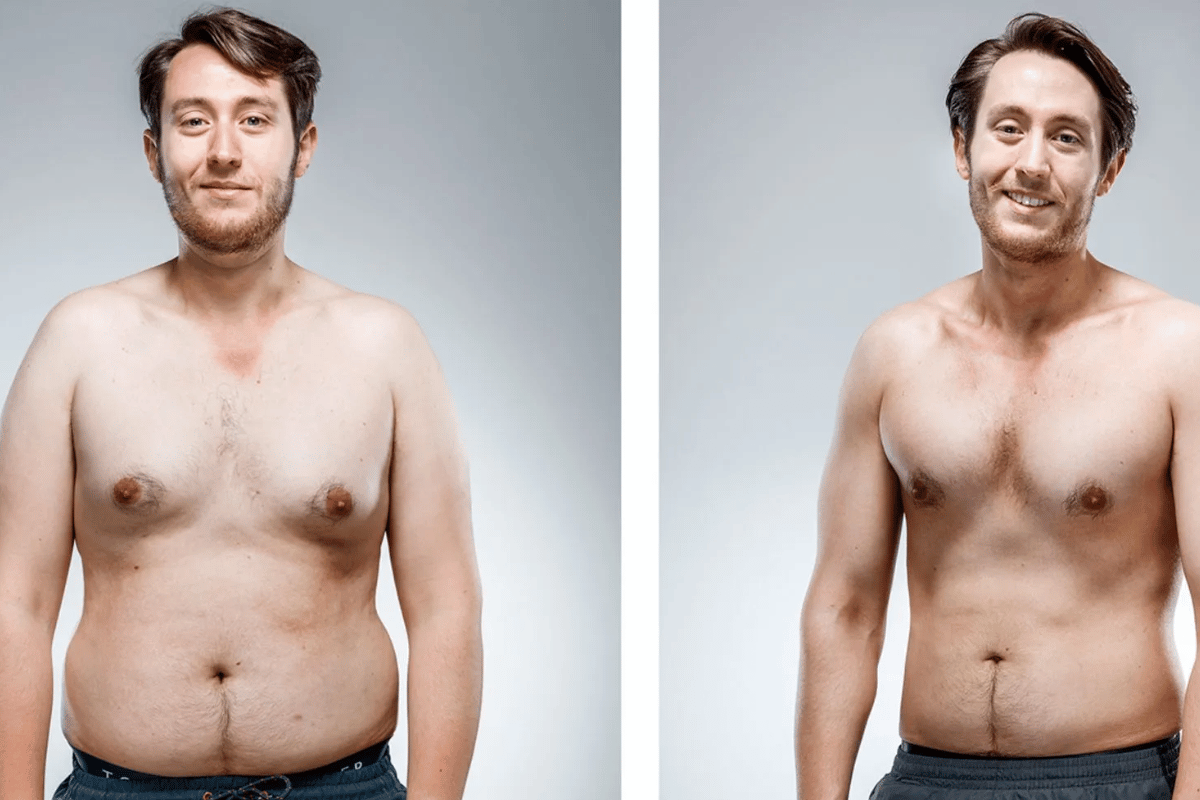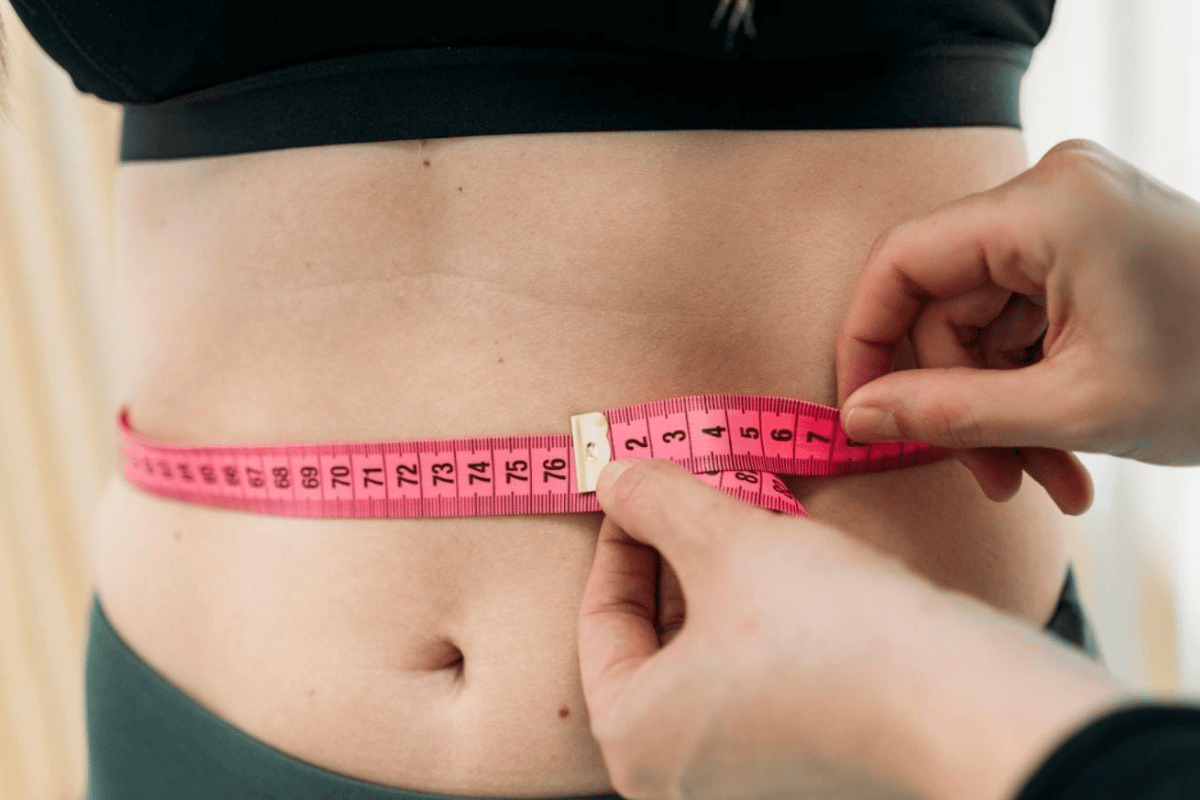After a relaxing and indulgent vacation, many face the common challenge of losing the belly fat that might have crept on. The 2024 Ultimate Guide to Losing Belly Fat Post-Vacation presents ten effective strategies to tackle this issue head-on. These strategies range from specific dietary changes, incorporating a mix of High-Intensity Interval Training (HIIT) and strength training, to adopting healthier lifestyle habits. The guide delves into the science behind why belly fat accumulates and how targeted exercises and nutrition can effectively reduce it. Key topics include understanding the role of metabolism in fat loss, the importance of hydration and sleep in weight management, and psychological aspects like stress management and mindful eating. With practical tips and expert advice, this guide offers a comprehensive approach to not just shedding that extra belly fat, but also maintaining a healthy and balanced lifestyle after your vacation. Stay tuned for an insightful journey into reclaiming your health and fitness.

10 Effective Strategies for Losing Belly Fat Post-Vacation
Vacations are a time for relaxation, indulgence, and breaking away from our usual routines. However, this break often leads to one common issue many face upon returning: an increase in belly fat. As we step into 2024, addressing this post-vacation challenge has become a priority for many. The reality of losing belly fat that has accumulated during a period of leisure and overindulgence is a task that requires effective strategies and dedication.
This guide, “2024’s Ultimate Guide: 10 Effective Strategies for Losing Belly Fat Post-Vacation,” is designed to tackle this issue head-on. We understand that losing belly fat is not just about aesthetics; it’s about health and well-being. Excess belly fat is not only a concern for your physical appearance but also poses various health risks. It’s linked to serious conditions such as heart disease, type 2 diabetes, and metabolic syndrome.
Throughout this guide, we will explore ten effective strategies that focus on addressing the root causes of belly fat accumulation, particularly post-vacation. These strategies range from making balanced dietary adjustments, engaging in specific types of physical activities like High-Intensity Interval Training (HIIT) and strength training, to incorporating lifestyle changes that support overall well-being.
Each strategy is designed to be practical, actionable, and suitable for various lifestyles and fitness levels. Whether you are a beginner or have been on your fitness journey for a while, these strategies can be tailored to fit your individual needs and help you in effectively losing belly fat.
Stay with us as we delve into each strategy, equipping you with the knowledge and tools to tackle belly fat and regain control over your health and body post-vacation. It’s time to turn those post-vacation woes into a successful journey towards a healthier, more confident you.
Understanding Belly Fat: Causes and Health Risks
Delving into the causes and risks associated with belly fat is crucial for effectively tackling the issue. Belly fat, particularly the visceral fat that resides deep in the abdomen, is not just an aesthetic concern but a significant health risk. Understanding what leads to its accumulation, especially during periods like vacations, is the first step in losing belly fat effectively.
One primary cause of increased belly fat is the change in dietary habits that often occurs during vacations. The indulgence in high-calorie, sugary, and fatty foods, combined with increased alcohol consumption, contributes significantly to the accumulation of abdominal fat. Additionally, the break from regular physical activity during vacation times leads to decreased muscle mass and a slower metabolism, further exacerbating the issue.
The health risks associated with excess belly fat are manifold. It’s linked to serious conditions such as cardiovascular diseases, insulin resistance, type 2 diabetes, and even certain forms of cancer. Visceral fat is particularly dangerous as it surrounds vital organs and releases inflammatory markers, leading to chronic inflammation and increased health risks.
Moreover, belly fat can be a sign of metabolic syndrome, a cluster of conditions that increase the risk of heart disease, stroke, and diabetes. These conditions include increased blood pressure, high blood sugar, excess body fat around the waist, and abnormal cholesterol or triglyceride levels.
Understanding these causes and risks highlights the importance of adopting effective strategies for losing belly fat. It’s not simply about improving physical appearance but more about enhancing overall health and reducing the risk of numerous health conditions. In the following sections, we will explore practical and sustainable strategies to address this critical health issue.
Balanced Diet Adjustments
A pivotal strategy in losing belly fat involves making thoughtful adjustments to your diet. A balanced diet plays a crucial role not just in weight loss but in overall health. Post-vacation, it’s essential to shift back to eating patterns that focus on nutrient-dense foods and proper portion sizes, steering away from the high-calorie and often nutritionally empty foods commonly indulged in during holidays.
The foundation of a diet aimed at losing belly fat should include a variety of fruits and vegetables, lean proteins, whole grains, and healthy fats. These foods provide essential nutrients and help maintain a feeling of fullness, reducing the likelihood of overeating. Fruits and vegetables, for example, are rich in fiber and water, which aid in digestion and can help prevent the bloating often associated with belly fat.
Incorporating lean proteins such as chicken, fish, legumes, and tofu is vital as they help in building muscle mass, which in turn can boost metabolism. Whole grains like quinoa, brown rice, and whole wheat products provide sustained energy and keep blood sugar levels stable, preventing the spikes and dips that can lead to overeating.
Healthy fats, found in foods like avocados, nuts, seeds, and olive oil, are also crucial. Contrary to popular belief, not all fats contribute to belly fat. In fact, healthy fats can help in weight loss as they provide satiety and prevent snacking on unhealthy options.
Meal planning and mindful eating are also key components of this strategy. Planning meals can help in controlling portion sizes and ensuring that you have healthy options readily available. Mindful eating, which involves paying full attention to the experience of eating and drinking, helps in recognizing hunger cues and enjoying food without overindulgence.
In summary, adjusting your diet to include a balance of nutrient-dense foods, controlling portion sizes, and eating mindfully are effective strategies for losing belly fat. These adjustments not only aid in weight loss but also contribute to overall health and well-being.

10 Effective Strategies for Losing Belly Fat Post-Vacation
High-Intensity Interval Training (HIIT)
When it comes to effective strategies for losing belly fat, High-Intensity Interval Training (HIIT) stands out for its efficiency and effectiveness. HIIT involves short bursts of intense exercise alternated with low-intensity recovery periods. This form of training is not only time-efficient but also particularly effective in burning visceral fat, the deep abdominal fat linked to various health issues.
The effectiveness of HIIT in reducing belly fat lies in its ability to burn a high number of calories in a short period. Additionally, HIIT increases the metabolic rate for hours after the workout, a phenomenon known as the ‘afterburn effect.’ This means you continue to burn calories long after the workout session is over.
For those new to HIIT, it is important to start at a manageable intensity and gradually increase. A typical HIIT session might involve 30 seconds of sprinting or fast cycling followed by 30 seconds to one minute of walking or slow pedaling. This can be repeated for 15 to 20 minutes. These workouts can be done using various methods, such as running, cycling, jump rope, or even bodyweight exercises.
One of the greatest benefits of HIIT, aside from its effectiveness in losing belly fat, is its versatility. HIIT workouts can be adapted to suit a range of fitness levels and can be performed almost anywhere, with or without equipment.
Incorporating HIIT into your post-vacation workout regimen can provide a significant boost in your efforts to lose belly fat. As with any exercise program, it’s important to pair HIIT with other strategies such as a balanced diet and adequate hydration for optimal results.
Strength Training for Core Strengthening
Alongside HIIT, strength training is an essential strategy in losing belly fat. While it might seem counterintuitive to build muscle when trying to lose fat, the reality is that strength training, especially exercises that target the core, can significantly aid in reducing abdominal fat.
The reason strength training is so effective in losing belly fat lies in its ability to build lean muscle mass. Increased muscle mass boosts your basal metabolic rate (BMR), which means your body burns more calories at rest. This enhanced calorie burn helps in reducing fat stores, including those around the abdomen.
Core strengthening exercises are particularly beneficial for targeting the belly area. Exercises such as planks, Russian twists, and bicycle crunches specifically work the abdominal muscles. However, it’s important to incorporate full-body strength training exercises as well, as they contribute to overall muscle growth and fat loss. Squats, deadlifts, and bench presses are examples of compound movements that engage multiple muscle groups and are highly effective in burning calories and building strength.
For those new to strength training, it’s essential to start with lighter weights and focus on proper form. Gradually increasing the intensity and weight as your strength improves will continue to challenge your muscles and lead to greater fat loss and muscle definition.
Incorporating strength training into your fitness regimen about two to three times a week can significantly aid in losing belly fat. Combining this with HIIT and a balanced diet will create a well-rounded approach that not only helps in reducing belly fat but also enhances overall fitness and health.
Hydration and Its Role in Fat Loss
A crucial yet often overlooked aspect of losing belly fat is maintaining proper hydration. Water plays an integral role in the body’s metabolic processes, including the efficient burning of calories and fat. Adequate hydration is essential for optimizing these metabolic functions, aiding significantly in weight loss efforts, particularly in reducing abdominal fat.
Water helps to flush out toxins and supports the liver and kidneys, vital organs in the fat-burning process. It also aids in digestion and can help prevent constipation, which can cause bloating and contribute to a larger belly appearance.
Another key benefit of staying hydrated is its impact on appetite control. Often, feelings of hunger can be mistaken for dehydration. By drinking sufficient water, you can reduce unnecessary snacking and overeating, crucial factors in managing calorie intake and losing belly fat. A practical tip is to drink a glass of water before meals, which can create a sense of fullness and lead to reduced food intake.
The amount of water needed can vary based on individual factors such as body weight, climate, and level of physical activity. However, a general guideline is to aim for at least eight 8-ounce glasses of water daily, which is roughly 2 liters or half a gallon. This should be increased if you are engaging in intense physical activity or are in a hot environment.
Incorporating hydrating foods into your diet, such as cucumbers, watermelon, and other fruits and vegetables with high water content, can also contribute to your overall hydration and aid in losing belly fat.
In summary, proper hydration is a simple yet powerful tool in the arsenal against belly fat. Not only does it enhance metabolism and digestion, but it also aids in appetite control, all of which are essential for effective fat loss.
Mindful Eating Habits
Adopting mindful eating habits is a transformative strategy for losing belly fat. Mindful eating is about being fully present and aware during meals, paying attention to the flavors, textures, and sensations of your food, as well as your body’s hunger and fullness cues. This approach can lead to a more harmonious relationship with food and is particularly effective in preventing overeating, a key factor in belly fat accumulation.
The practice of mindful eating involves eating slowly and without distraction, allowing you to recognize when you are actually full, thus reducing the likelihood of consuming excess calories. This can be particularly challenging in today’s fast-paced world, where meals are often eaten on the go or while multitasking. However, by making a conscious effort to eat without distractions like TV or smartphones, you can significantly improve your eating habits.

10 Effective Strategies for Losing Belly Fat Post-Vacation
Mindful eating also means listening to your body’s natural hunger signals rather than eating out of boredom, stress, or emotion. It involves understanding the difference between true physical hunger and emotional eating. Emotional eating is often a response to stress, anxiety, or other emotions and can lead to significant calorie intake without actual physical hunger.
Incorporating mindful eating into your daily routine can have profound effects on your overall eating behavior. It encourages you to make more thoughtful food choices, favoring nutritious and satisfying foods over high-calorie, nutrient-poor options that contribute to belly fat.
By embracing mindful eating, you not only work towards losing belly fat but also develop a healthier and more enjoyable relationship with food. This strategy can lead to long-term changes in eating habits, contributing significantly to weight loss and overall well-being.
Quality Sleep and Weight Management
Quality sleep is an often underestimated yet vital component in the journey to losing belly fat. Adequate sleep is essential for overall health and plays a significant role in weight management, including the reduction of abdominal fat. The relationship between sleep and weight is complex and multifaceted, impacting various factors that contribute to belly fat.
Lack of sleep can disrupt the balance of key hormones that regulate appetite and hunger. Specifically, insufficient sleep can increase levels of ghrelin, the ‘hunger hormone,’ while decreasing levels of leptin, the hormone that signals satiety. This imbalance can lead to increased food intake and cravings, especially for high-calorie, carb-rich foods, contributing to belly fat accumulation.
Additionally, poor sleep can affect metabolism and the body’s ability to process insulin. When the body doesn’t use insulin effectively, it can lead to an increased storage of fats, particularly in the abdominal area. Moreover, fatigue from lack of sleep can result in lower physical activity levels, further hindering efforts in losing belly fat.
To improve sleep quality and support weight management efforts, it’s crucial to establish a regular sleep routine. Aim for 7-9 hours of uninterrupted sleep per night. Creating a sleep-conducive environment, such as a dark, quiet, and cool bedroom, can greatly enhance sleep quality. Avoiding stimulants like caffeine and heavy meals before bedtime is also advisable.
Incorporating relaxation techniques such as meditation, deep breathing exercises, or gentle yoga before bed can promote better sleep. It’s also beneficial to limit exposure to screens and bright lights in the evening, as these can disrupt the body’s natural circadian rhythms.
In summary, prioritizing quality sleep is a key strategy in losing belly fat. By improving sleep habits, you can regulate appetite hormones, optimize metabolism, and maintain higher energy levels, all of which contribute to effective weight and belly fat management.
Tracking Progress and Setting Realistic Goals
In your journey to lose belly fat after a vacation, it’s crucial to have a clear roadmap for success. Tracking your progress and setting realistic goals can be your guiding light throughout this endeavor. Not only does it help you stay motivated, but it also ensures that you are making steady and sustainable progress toward your belly fat loss objectives.
The Importance of Tracking Progress
Tracking your progress provides you with tangible evidence of your efforts paying off. It enables you to assess which strategies are working effectively and where adjustments may be necessary. Here are some key aspects of tracking progress:
1. Measurement Metrics
To start, establish baseline measurements of your waist circumference, weight, and body fat percentage. These metrics give you a baseline to compare against as you progress. Ensure to record these measurements accurately, preferably at the same time of day to maintain consistency.
2. Regular Check-Ins
Schedule regular check-ins to assess your progress. It can be weekly, bi-weekly, or monthly, depending on your preferences. During these check-ins, re-measure your waist, weight, and body fat percentage. Analyze the changes and note any positive trends or areas that need improvement.
3. Journaling and Food Diary
Maintaining a journal or food diary can help you keep tabs on your dietary habits and identify any patterns that may hinder your progress. Write down what you eat, portion sizes, and any emotional triggers for overeating. This practice can also help you spot any hidden calories that may be contributing to belly fat.
Setting Realistic Goals
While tracking progress is essential, setting realistic and achievable goals is equally vital. Unrealistic expectations can lead to frustration and demotivation. Here’s how to set goals effectively:
1. Specific and Measurable
Your goals should be specific and measurable. Rather than saying, “I want to lose belly fat,” aim for something like, “I aim to reduce my waist circumference by one inch in the next four weeks.” Specific goals allow you to track progress more effectively.
2. Achievable and Realistic
Ensure that your goals are achievable within your current circumstances. Setting overly ambitious targets may set you up for disappointment. Consider factors like your lifestyle, time availability, and physical capabilities when setting goals.
3. Time-Bound
Attach a timeframe to your goals. This helps create a sense of urgency and accountability. For instance, “I plan to lose five pounds in the next two months.” Having a deadline can motivate you to stay on track.
4. Celebrate Milestones
Breaking your overall goal into smaller milestones can make the journey more manageable and rewarding. Celebrate each milestone you achieve along the way. It keeps your motivation high and makes the process more enjoyable.

10 Effective Strategies for Losing Belly Fat Post-Vacation
Incorporating Healthy Fats and Proteins into Your Diet
As you embark on your journey to shed post-vacation belly fat, it’s essential to pay close attention to your dietary choices. One effective strategy is to incorporate healthy fats and proteins into your daily meals. These nutrients not only contribute to overall health but can also play a crucial role in your belly fat loss efforts.
The Role of Healthy Fats
Contrary to the misconception that all fats are harmful, healthy fats are an essential component of a balanced diet. They serve several purposes when it comes to losing belly fat:
1. Satiety and Appetite Control
Healthy fats, such as those found in avocados, nuts, and olive oil, help you feel full and satisfied after a meal. This satiety can prevent overeating and reduce the chances of consuming excess calories, especially from unhealthy snacks.
2. Hormone Regulation
Certain healthy fats are necessary for the production of hormones that affect your metabolism and fat-burning processes. Omega-3 fatty acids, for example, play a role in regulating insulin sensitivity and reducing inflammation, which are key factors in belly fat accumulation.
3. Energy Source
Healthy fats can serve as a valuable source of sustained energy, which is particularly beneficial when engaging in physical activities like exercise. They provide a longer-lasting source of fuel compared to carbohydrates.
Protein’s Impact on Belly Fat Loss
Protein is another critical component of a belly fat loss-friendly diet. It offers several advantages:
1. Thermogenic Effect
Protein has a higher thermogenic effect compared to carbohydrates and fats, meaning your body expends more energy (calories) digesting and metabolizing it. This can contribute to a modest increase in overall calorie expenditure.
2. Muscle Preservation
When you’re aiming to lose belly fat, preserving lean muscle mass is crucial. Protein plays a central role in muscle maintenance and repair, ensuring that you primarily lose fat rather than muscle tissue during weight loss.
3. Appetite Control
Similar to healthy fats, protein has a satiating effect that can help curb your appetite and prevent overindulgence in high-calorie, low-nutrient foods. Including protein in your meals can lead to reduced calorie intake overall.
Tracking Progress and Setting Realistic Goals
In your journey to lose post-vacation belly fat, it’s crucial to establish a system for tracking your progress and setting achievable goals. These practices will not only keep you motivated but also help you maintain a clear path toward your desired results.
The Significance of Tracking Progress
Effective progress tracking provides tangible evidence of your efforts paying off. It allows you to assess which strategies are working effectively and which areas require adjustment. Here are some vital aspects of tracking your belly fat loss journey:
1. Measurement Metrics
To begin, establish baseline measurements for your waist circumference, weight, and body fat percentage. These metrics serve as your starting point and provide valuable data to evaluate your progress. Be consistent in recording these measurements, ideally at the same time each day.
2. Regular Evaluation
Schedule periodic check-ins to assess your progress. You can choose the frequency that suits you best, whether it’s weekly, bi-weekly, or monthly. During these check-ins, re-measure your waist, weight, and body fat percentage. Analyze the changes and identify positive trends or areas that need improvement.
3. Journaling and Dietary Records
Keeping a journal or food diary can help you monitor your eating habits and identify any patterns that might hinder your progress. Record what you eat, portion sizes, and any emotional triggers for overeating. This practice can also help you identify hidden sources of excess calories contributing to belly fat.
Setting Realistic and Achievable Goals
While tracking progress is essential, setting realistic and attainable goals is equally crucial. Unrealistic expectations can lead to frustration and loss of motivation. Here’s how to set goals effectively:
1. Specific and Measurable
Your goals should be specific and measurable. Instead of saying, “I want to lose belly fat,” aim for a goal like, “I aim to reduce my waist circumference by one inch in the next four weeks.” Specific goals allow for better progress tracking.
2. Achievable and Realistic
Ensure that your goals are attainable given your current circumstances. Setting overly ambitious targets may set you up for disappointment. Take into account factors like your lifestyle, available time, and physical capabilities when establishing goals.
3. Time-Bound
Attach a timeframe to your goals. This adds a sense of urgency and accountability to your efforts. For instance, “I plan to lose five pounds in the next two months.” Having a deadline can motivate you to stay on track.
4. Celebrate Milestones
Breaking your overall goal into smaller milestones can make the journey more manageable and rewarding. Celebrate each milestone you achieve along the way. It keeps your motivation high and makes the process more enjoyable.
Incorporating Healthy Habits for Long-Term Success
In your quest to lose post-vacation belly fat and maintain a healthier lifestyle, it’s vital to focus on incorporating sustainable and long-term habits. These habits can help you not only shed excess belly fat but also keep it off in the future, ensuring lasting success.
The Importance of Sustainable Habits
Quick-fix diets and extreme exercise regimens may yield short-term results, but they often lead to rebound weight gain once normal habits resume. Sustainable habits, on the other hand, promote gradual and lasting change. Here are some key aspects of incorporating healthy habits:
1. Mindful Eating
Practice mindful eating, which involves paying full attention to your meals without distractions. Savor each bite, eat slowly, and listen to your body’s hunger and fullness cues. This approach can help you enjoy your food more and prevent overeating.
2. Balanced Diet
Continue to prioritize a balanced diet rich in whole foods. Incorporate a variety of fruits, vegetables, lean proteins, whole grains, and healthy fats into your meals. Avoid extreme restrictions or fad diets, as they are difficult to sustain in the long run.
3. Regular Exercise
Maintain a consistent exercise routine that includes a mix of cardiovascular workouts, strength training, and flexibility exercises. Find activities you enjoy to ensure that you stick with them over time. Consistency is key for sustainable results.
4. Adequate Sleep
Prioritize getting enough quality sleep each night. Aim for 7-9 hours of restorative sleep to support overall health and weight management. Quality sleep can also help regulate hormones related to appetite and metabolism.
Setting Realistic and Achievable Long-Term Goals
While it’s essential to focus on long-term habits, setting realistic and attainable goals remains crucial. Here’s how to approach this:
1. Gradual Progress
Recognize that lasting changes take time. Set gradual goals that allow you to make steady progress without feeling overwhelmed. For example, aim to maintain your current weight for a few months before setting new weight loss goals.
2. Continuous Learning
Stay informed about nutrition, fitness, and health. Continue learning and adapting your habits based on the latest research and your personal experiences. Knowledge is a powerful tool for long-term success.
In conclusion, incorporating sustainable and healthy habits is the key to long-term success in your journey to lose post-vacation belly fat and maintain a healthier lifestyle. By focusing on mindful eating, a balanced diet, regular exercise, and adequate sleep, you can achieve lasting results. Setting realistic and gradual goals while continuing to learn and adapt your habits is essential.

10 Effective Strategies for Losing Belly Fat Post-Vacation
Conclusion: Combining Strategies for Maximum Effectiveness
Congratulations on completing this comprehensive guide on effective strategies for losing post-vacation belly fat! Throughout this guide, we’ve explored a range of strategies and habits that can help you achieve your goals and maintain a healthier lifestyle. In this concluding section, we’ll summarize the key takeaways and emphasize the importance of combining these strategies for maximum effectiveness.
A Holistic Approach
Losing belly fat and maintaining a healthy weight isn’t about a single magic solution; it’s a journey that requires a holistic approach. Let’s recap the essential strategies we’ve covered:
1. Balanced Diet Adjustments
Prioritize a balanced diet that includes whole foods, healthy fats, proteins, and mindful eating practices.
2. High-Intensity Interval Training (HIIT)
Incorporate HIIT workouts to maximize calorie burn and improve cardiovascular health.
3. Strength Training for Core Strengthening
Engage in strength training exercises to tone your abdominal muscles and support fat loss.
4. Hydration and Its Role in Fat Loss
Stay well-hydrated to boost metabolism and promote fat burning.
5. Mindful Eating Habits
Practice mindful eating to control portion sizes and prevent overeating.
6. Quality Sleep and Weight Management
Prioritize quality sleep to regulate hormones and support weight management.
7. Stress Management Techniques
Learn effective stress reduction strategies to prevent stress-related weight gain.
8. Regular Cardiovascular Exercise
Incorporate regular cardiovascular exercise into your routine to burn calories and improve fitness.
9. Tracking Progress and Setting Realistic Goals
Monitor your progress and set achievable goals to stay motivated and on track.
10. Incorporating Healthy Fats and Proteins into Your Diet
Include healthy fats and proteins in your meals for satiety and calorie management.
11. Sustainable Habits for Long-Term Success
Establish sustainable habits that promote lasting change and maintain a healthier lifestyle.
Combining Strategies
The key to success lies in combining these strategies based on your individual preferences and needs. What works best for one person may not be the same for another, so it’s important to find a balanced approach that suits you. Remember that consistency is key, and progress may be gradual.
In closing, your journey to losing post-vacation belly fat and maintaining a healthier lifestyle is a worthwhile endeavor. By combining these strategies and staying committed to your goals, you can achieve the desired results and enjoy improved overall well-being. Thank you for entrusting us with your journey, and we wish you success on your path to a healthier you.
10 Effective Strategies for Losing Belly Fat Post-Vacation
References and Further Reading
- Harvard Health Publishing. (2019). Abdominal fat and what to do about it. Harvard Medical School.
- Mayo Clinic. (2022). Belly fat in men: Why weight loss matters. Mayo Clinic.
- Healthline. (2022). The 30 Best Ways to Get a Flat Stomach. Healthline.
- American Heart Association. (2022). Waist Size May Be a Predictor for Life Expectancy. American Heart Association.
- Mayo Clinic. (2022). Strength training: Get stronger, leaner, healthier. Mayo Clinic.
- WebMD. (2022). The Benefits of Protein. WebMD.
- Sleep Foundation. (2022). How Sleep Affects Weight. Sleep Foundation.
- Mayo Clinic. (2022). Stress symptoms: Effects on your body and behavior. Mayo Clinic.